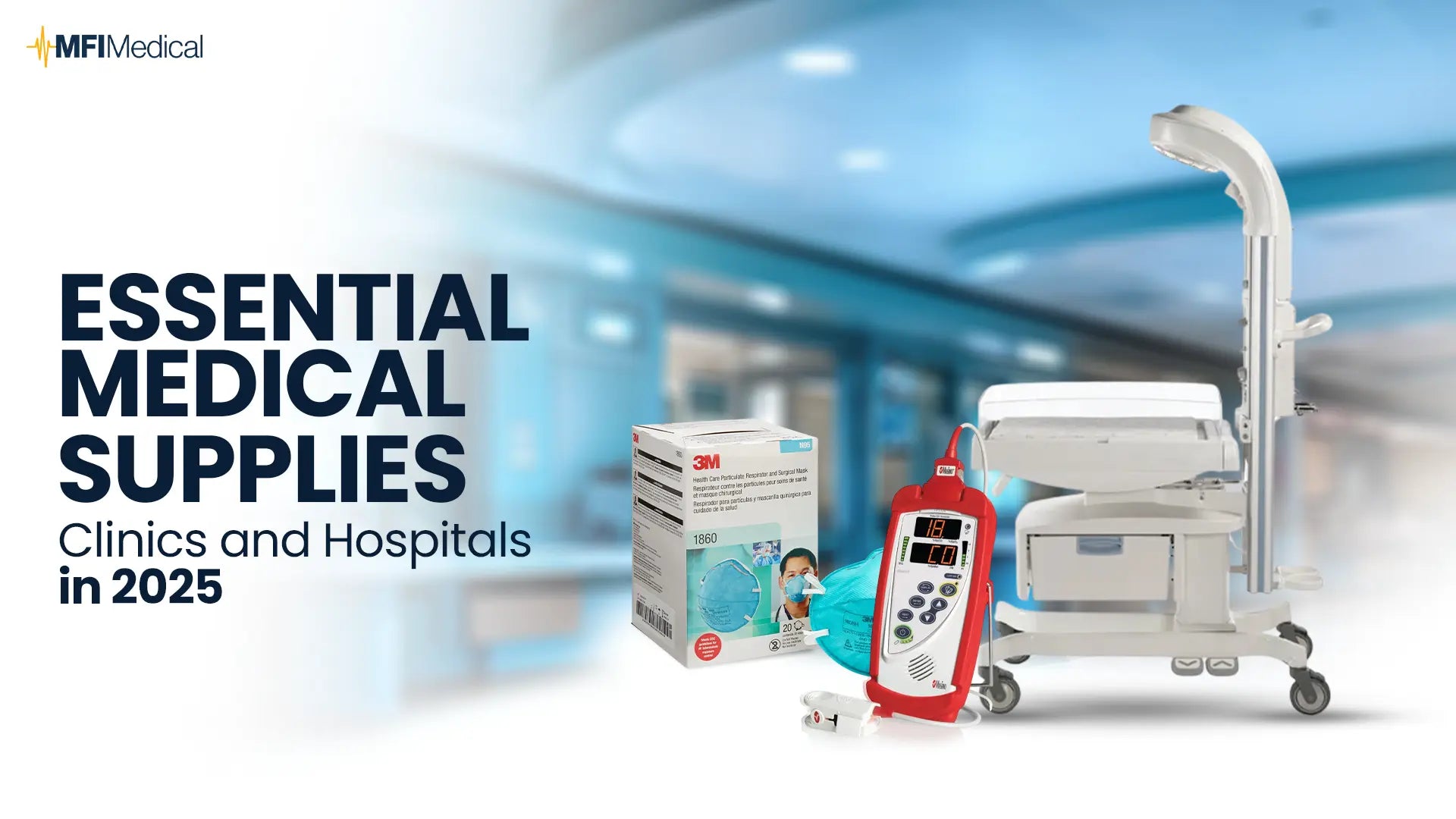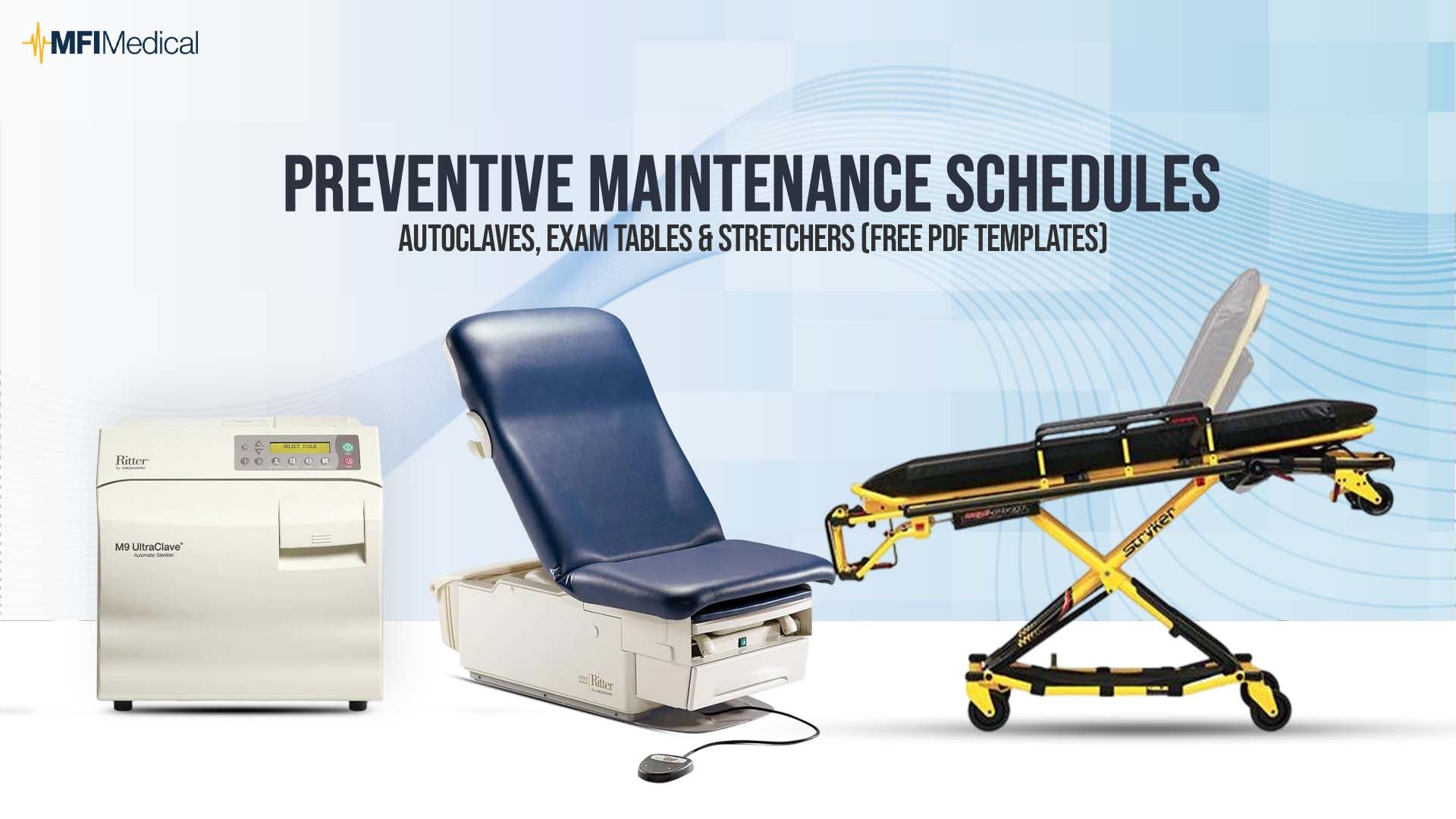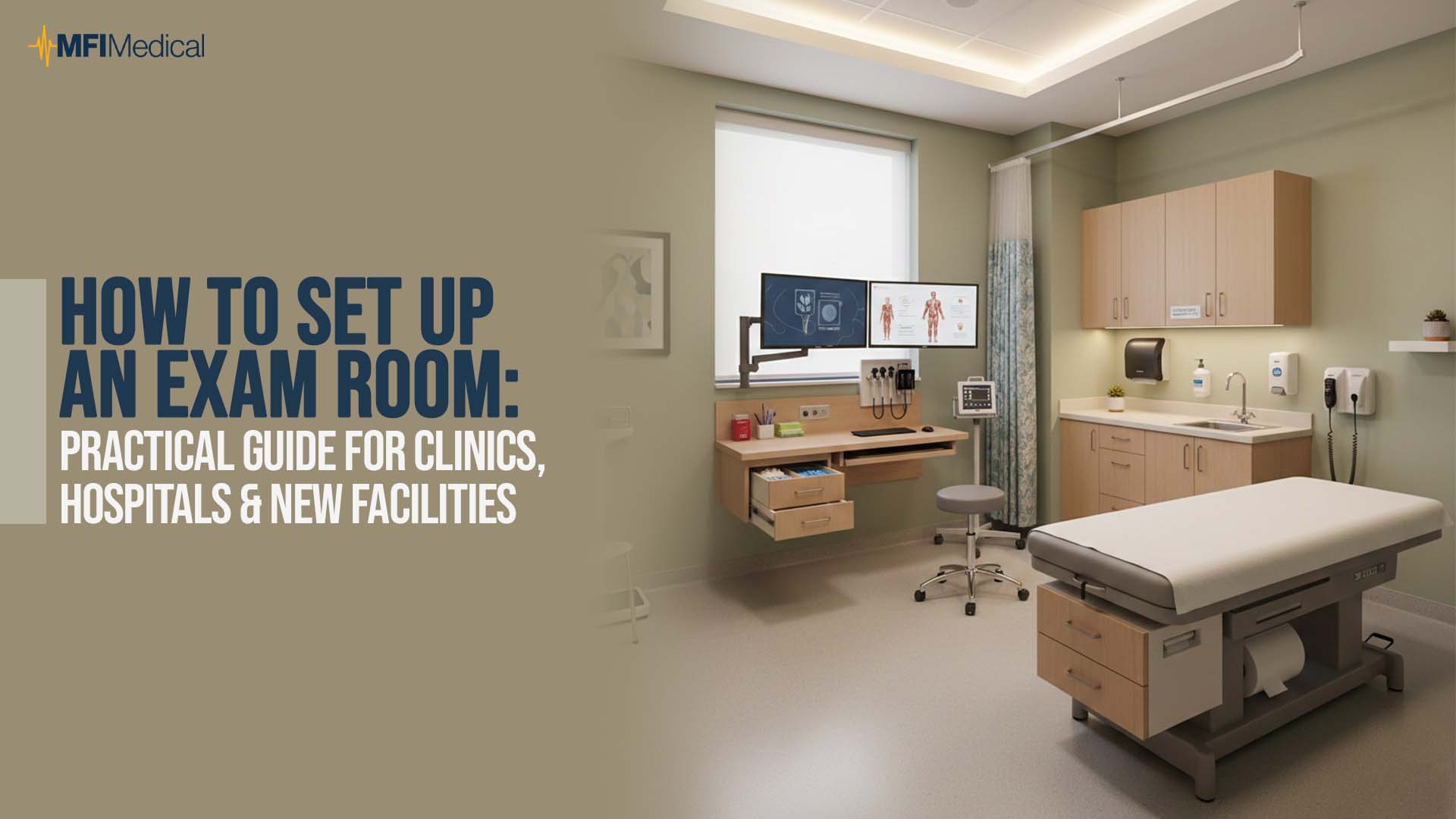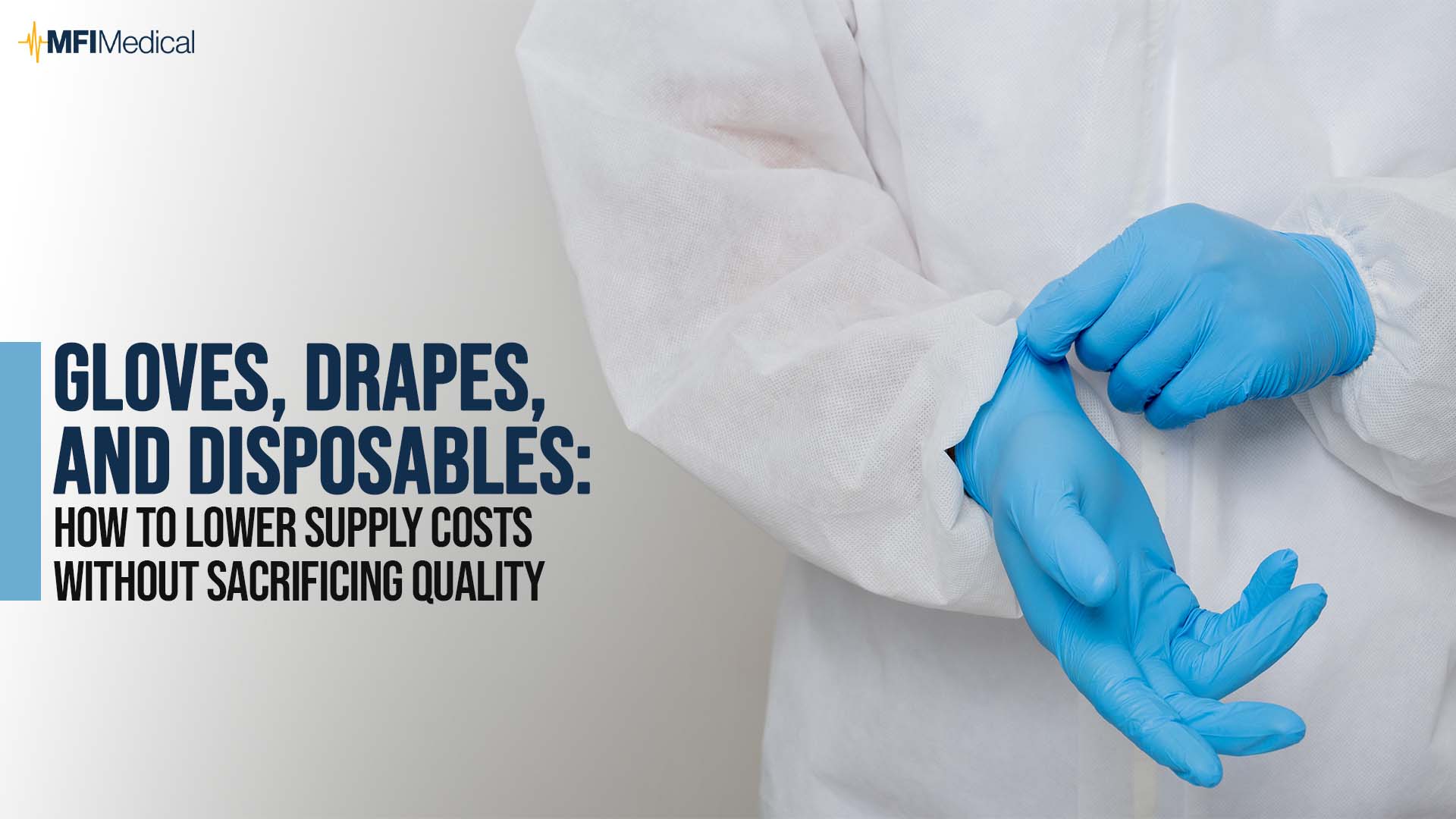In 2025, running a hospital or clinic means balancing patient care, regulatory demands, and rapidly evolving technology. Whether you manage a high-volume emergency department or a small outpatient clinic, your supply strategy must do more than check boxes—it needs to keep pace with the changing healthcare landscape.
Below is a comprehensive, category-by-category breakdown of essential medical supplies every facility should have on hand. From core diagnostics to AI-driven smart tools, this list encompasses the essential tools that support excellent care, protect staff, and enhance outcomes.
I. Diagnostic & Monitoring Equipment
Early detection and continuous monitoring are critical to effective care. These tools enable clinicians to make rapid, accurate decisions based on real-time patient data.
-
Digital blood pressure monitors: Provide quick, consistent readings with minimal user error. Essential in outpatient, inpatient, and emergency settings.
-
Infrared and non-contact thermometers: Reduce infection risk and speed up screening during high patient volume.
Pulse oximeters: Track oxygen levels in real time, especially useful in respiratory care and post-op recovery.

-
Glucometers & test strips: Enable immediate blood sugar checks in diabetic patients or emergencies.
-
ECG/EKG machines (portable & stationary): Capture cardiac data to assess arrhythmias, heart attacks, or routine exams.
-
Vital signs monitors: Combine multiple metrics—SpO₂, blood pressure, temperature—into one easy-to-read interface.
-
Otoscopes and ophthalmoscopes: Core diagnostic tools for examining ears and eyes in general practice.
-
Portable ultrasound machines: Ideal for bedside assessments and clinics offering prenatal or musculoskeletal care.
-
Point-of-care testing kits (COVID-19, flu, RSV, strep): Deliver rapid test results to guide immediate treatment.
II. Treatment & Procedural Supplies
These are the tools your clinical teams use daily—from wound care to life-saving interventions. Reliability and quality are non-negotiable.
-
IV sets and infusion pumps: Ensure safe, controlled medication delivery during inpatient and emergency care.
-
Catheters (urinary, central lines): Required for fluid drainage, medication access, or critical care support.
-
Sutures and wound care kits: Keep wounds clean, closed, and healing properly in both surgical and routine care.
-
Surgical instruments: Forceps, scissors, and clamps are the backbone of procedural precision.
-
Electrosurgical devices: Allow clean tissue dissection and cauterization with minimal blood loss.
-
Defibrillators (AEDs and manual): Critical in cardiac arrest situations—every facility should have at least one.
-
Oxygen delivery systems: Support patients with respiratory distress using nasal cannulas or non-rebreather masks.
-
Nebulizers and spacers: Deliver inhaled medication effectively in asthma and COPD treatment.
III. Personal Protective Equipment (PPE)
Even post-pandemic, PPE remains a frontline defense against infectious disease. Proper PPE supports staff safety and meets compliance requirements.
N95 respirators & surgical masks: Protect staff and patients during procedures and daily interaction.
-
Face shields and goggles: Prevent splash exposure during treatments and cleaning.
-
Isolation gowns: Essential for handling infectious cases or working in sterile zones.
-
Disposable gloves (nitrile, latex-free): Needed for every contact-based exam or procedure.
-
Shoe covers & bouffant caps: Maintain sterile environments in ORs and clean zones.
IV. Infection Control & Sterilization
Preventing healthcare-associated infections (HAIs) requires constant attention to sterilization and cleanliness.
-
Autoclaves and sterilizers: Decontaminate surgical tools and instruments between uses.
-
High-level disinfectants & cleaners: Kill pathogens on surfaces, equipment, and high-touch areas.
-
Hand sanitizer stations: Promote frequent hand hygiene at entry points and exam rooms.
-
Antiseptic wipes and sprays: Allow for fast, on-the-spot disinfection.
-
UV disinfection units: Sanitize entire rooms or equipment using non-chemical light-based systems.
V. Consumables & General Supplies
These are the basics—used every day, in every setting. Without them, operations grind to a halt.
-
Syringes and needles: Essential for injections, vaccinations, and blood draws.
-
Alcohol prep pads: Pre-injection and procedural skin prep made easy.
-
Specimen containers: Store and transport lab samples safely.
-
Bandages, gauze, tape: Support wound healing and surgical aftercare.
-
Tourniquets: Assist with blood draws and IV insertions.

-
Exam table paper & linens: Maintain cleanliness and infection control between patients.
VI. Emergency & Resuscitation Supplies
When seconds matter, every supply in this category must be immediately accessible and in working condition.
-
Crash carts: Stocked with emergency meds, airway tools, and monitors for rapid response.
-
Suction devices: Clear airways in respiratory distress or surgical settings.
-
Bag valve masks: Provide manual ventilation when mechanical systems aren’t available.
-
Emergency medications: Epinephrine, naloxone, and atropine are life-saving staples.
-
Laryngoscopes & intubation kits: Secure airways quickly during code events.
VII. Office & Workflow Technology
Efficient operations support better care. Digital tools improve accuracy, speed, and collaboration.
-
Electronic Health Record (EHR) systems: Centralize patient records and streamline documentation.
-
Digital intake forms & kiosks: Cut down wait times and reduce paper use.
-
Label printers & barcode scanners: Improve specimen tracking and medication safety.
-
Tablets or laptops for charting: Keep providers mobile and connected.
-
Telemedicine platforms: Expand reach and reduce unnecessary visits with secure video consultations.
VIII. Specialized Care Equipment
Specialty practices need tailored gear. These tools ensure focused care in OB/GYN, dermatology, pulmonology, and more.
-
Bariatric exam tables and wheelchairs: Accommodate higher weight capacity safely and comfortably.

-
Cryotherapy units: Freeze skin lesions or precancerous growths in dermatology clinics.
-
EMG & spirometry machines: Assess nerve function and lung capacity in neurology and pulmonology.
-
Colposcopes & dermatoscopes: Enable detailed imaging for OB/GYN and skin exams.
IX. Sustainability & Energy-Efficient Equipment
Regulations and cost savings are pushing facilities toward greener solutions.
-
Low-energy surgical lights: Reduce power usage without compromising visibility.
-
Reusable PPE systems: Lower waste while maintaining infection control.
-
HVAC & air purification systems: Improve indoor air quality and reduce utility costs.
X. AI-Enhanced & Smart Devices
Smart technology is making care safer, faster, and more personalized.
-
Smart stethoscopes: Record and analyze heart/lung sounds with app integration.
-
Wearables: Track vitals remotely for at-home or post-discharge patients.
-
AI diagnostic tools: Flag abnormal readings and assist with imaging interpretation.
-
Smart IV pumps: Alert staff to flow issues or dosage errors in real time.
-
Medication adherence trackers: Remind patients and report missed doses.
Final Tip for 2025
Perform routine inventory checks using ABC analysis to prioritize high-use and high-value items. Staying aligned with The Joint Commission and OSHA requirements is key to compliance and safety.
Why Choose MFI Medical?
MFI Medical is your one-stop shop for reliable, professional-grade medical supplies. We offer a wide range of equipment—from essentials to specialty systems—trusted by hospitals, clinics, and care teams across the U.S.
Browse our full product catalog and stock up with confidence. Quality gear. Expert support. Fast shipping.



